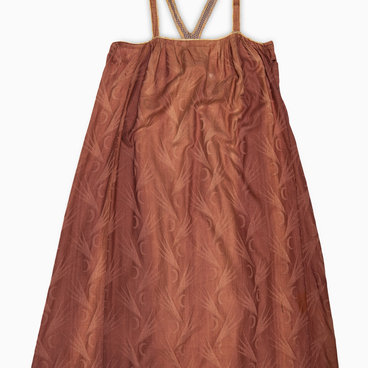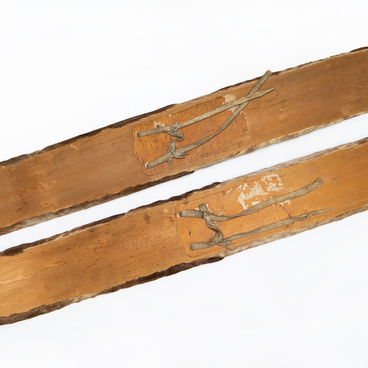The irregularly shaped paleontological specimen presented at the exhibition contains one large imprint, as well as many small imprints of brachiopod shells. The largest one has a ribbed surface. The sample is represented by sedimentary rock siltstone of light gray color with films of iron oxides.
In the distant geological past, a huge shallow Mesozoic Sea spread out on the site of Komsomolsk-on-Amur and its surroundings. It was inhabited by various animals, as evidenced by the finds of prints in the rock and fossils of ancient animals. The latter are of particular interest due to the fact that they can be used to assume what the animal world was like in a particular area hundreds of millions of years ago, to trace the evolution of the animal world.
The imprint of a brachiopod shell from the museum’s collection was found in Southwestern Priokhotye. Brachiopods have a very long history of life on Earth — at least 538 million years. They are marine animals belonging to their own type of Brachiopoda, that is, “arm-foot”. From the Greek, “brachion” means “arm”, and “podos” means “foot”.
The shell sections of brachiopods are different, they are called “ventral” and “dorsal”. This feature distinguishes them from mollusks, in which the right and left sections of the shell are symmetrical to each other. These marine animals were found in rocks of the Early Cambrian. At the same time, the researchers noted that brachiopods were especially widespread in the Devonian (fourth) geological period of the Paleozoic era, which began 419.2 and ended 358.9 million years ago. They were most often found in the form of fossils specifically in rocks of this age.
The size of the shells of brachiopods rarely exceeds 7–10 centimeters, but there are shell imprints 20–30 centimeters wide. In some species, the shells are smooth, in others they are ribbed or with a scalloped edge. Brachiopods are filter feeders by type.






